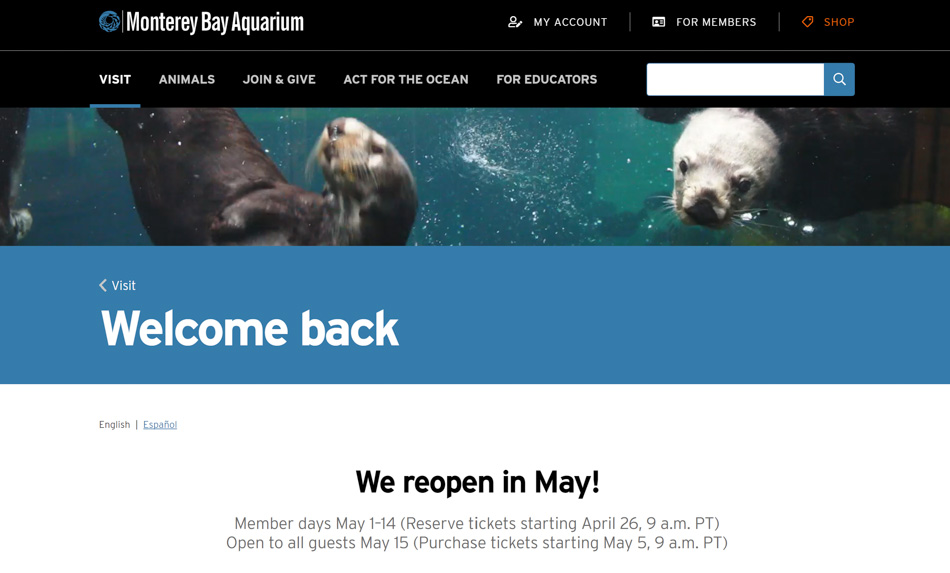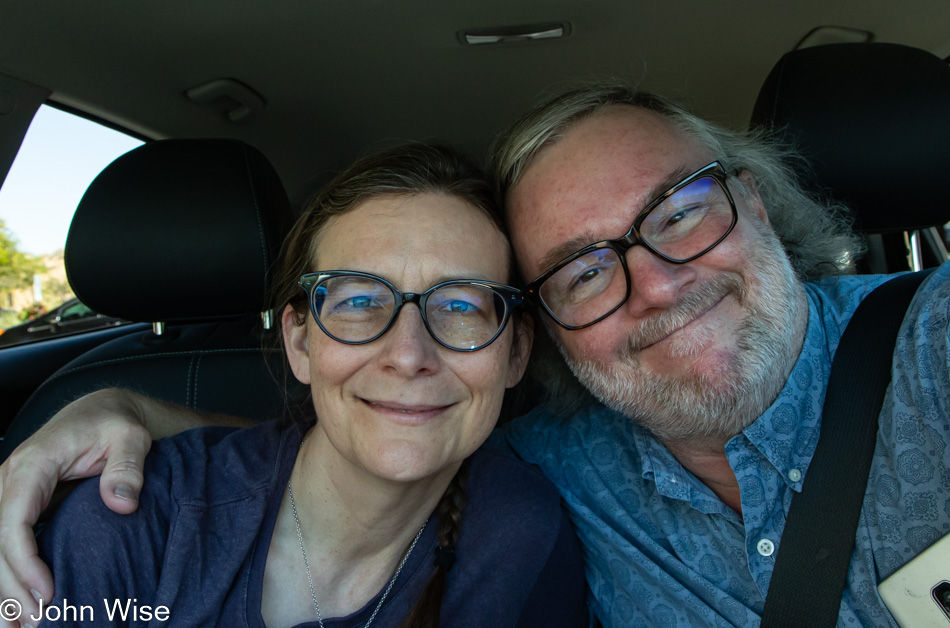
Leaving Phoenix, Arizona, before noon is a luxury. Heck, leaving anywhere at any time is a luxury. A sure sign of aging is that I no longer really feel comfortable taking selfies when I’m driving, so we took this one in the parking lot as we were about to depart. At times over the years, this was a habit that preceded almost every trip, but we’ve gotten lax about it in recent years.
Most preparations for this vacation were finished by yesterday; all that was left today was picking up a bag of ice for the ice chest, some raspberries, and cashews. With all of that out of the way, I tried planting myself at King Coffee to get some writing done, but all I could think about was departing the valley. Then, about 4 hours before I thought we’d leave, Caroline told me she was ready to go. After a stop at In-N-Out on the far west of Phoenix, we were ready to embark on the long haul over the desert.
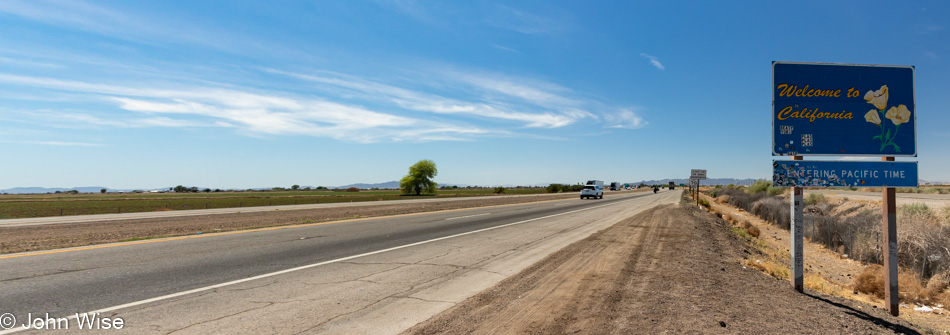
As we left, the plan had been to drive into California on Interstate 10 and make our way to either Tehachapi or Bakersfield, but having this extra time available, we detoured in the direction of Santa Barbara. Stopping to take pictures at state lines was also an old habit that fell out of favor; again, we’re fixing these omissions.
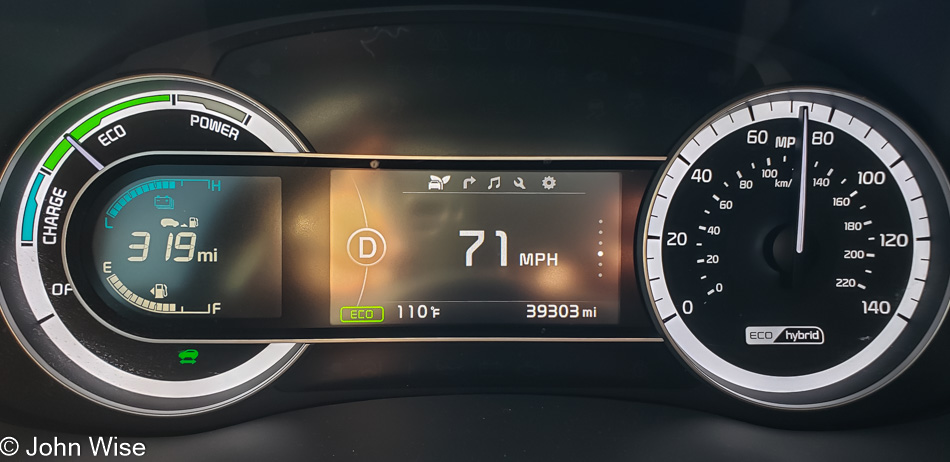
We were supposed to have our first 100-degree day (38c) in Phoenix tomorrow, May 1st. So, how the hell is it 110 (43 Celsius) here in the California desert on April 30th?
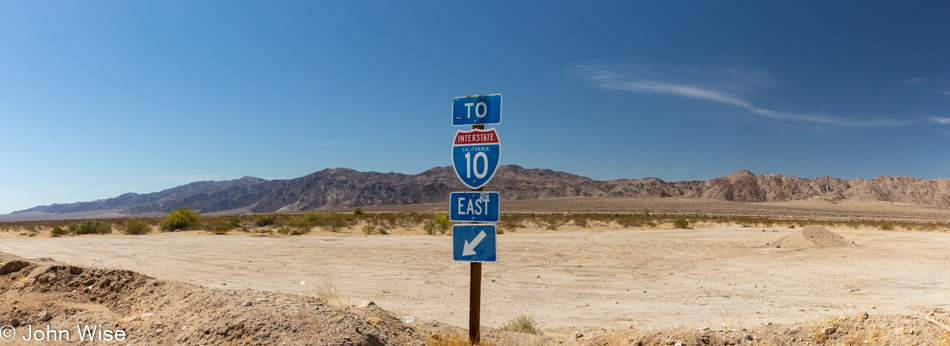
Why would anyone get off the freeway to take a photo at an empty offramp that seemingly leads nowhere? I’ll give you one guess. Note that there are no bushes or anything to hide behind out here, so you know it wasn’t Caroline who demanded we take this exit.

Once in the Los Angeles area, or Pomona, to be more precise, we stopped at Mix Bowl on Indian Hill Blvd. Being early afforded us the time to sit down for dinner at an old favorite place of ours. We’d not been here in countless years, but we did recognize one of the guys working there. I looked up an old photo here on my blog and showed him a picture of the place we had taken back in January 2001 on our very first visit when it was still called Big Bowl before they were sued to change the name. While the fried morning glory is no longer on the menu, we were able to start with steamed koo chai and grilled pork before sharing one of the best pad kee mow with fried tofu that we know of. Some habits are worth the effort of maintaining.
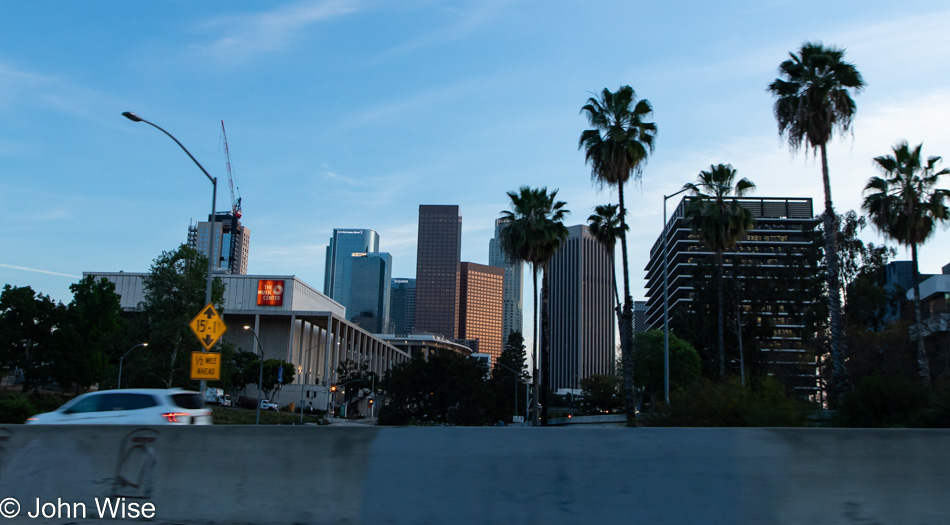
Dozens of offramps beg us to get off the freeway and go explore, snap some photos, and bask in nostalgia but with our destination up the road, we had to keep on driving. This was right at sunset when we were passing downtown Los Angeles on the 101. We finally pulled into Carpenteria shortly after 21:30 and snagged a room at Motel 6 for the relatively inexpensive price of only $110 minus tax with a veterans’ discount. Tomorrow, we head up the coast from here as we are right next to it, which gives us an extra 137 miles of the coastal region before reaching Cambria, where we were originally supposed to meet the ocean.

